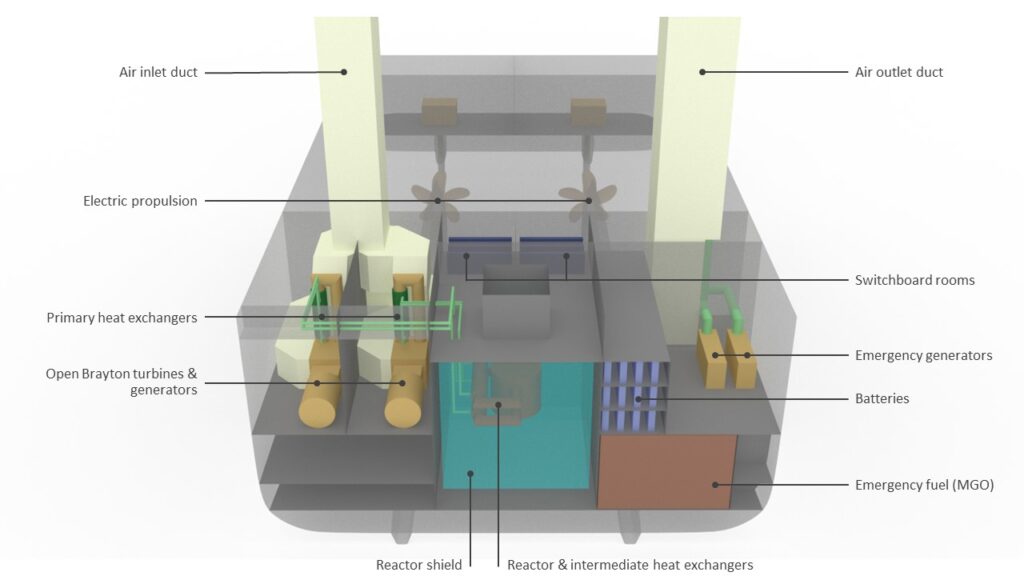Alternative fuels in the maritime industry are needed now more than ever. New C-Job research on nuclear energy shows it is promising for maritime applications in the future. With the combination of more advanced technology and the correct regulations for safe application in place, nuclear power can be a great source of energy.
What is nuclear energy?
Nuclear energy is energy that is inside the core of an atom. It can be a great way to create electricity, but it must first be safely released from the atom. To do so, nuclear fission must be performed to split the atoms. This process can be done at a nuclear powerplant, or anywhere that has the correct series of machines to control nuclear fission. This process will only become more safe and cost-effective in the future, making it a great resource.

Molten Salt Reactor
C-Job finds that the Molten Salt Reactor has the most promising potential to produce energy for the maritime industry in the long term. Molten Salt Reactor concepts have a built-in passive safety system due to the salt being used as the coolant and fuel, and the strong negative temperature coefficient, indicating that upon temperature increase the reactivity drops strongly. This prevents problems with stability.
The passive safety of this type of reactor, along with the combination of its high burn-up and the future potential to use the thorium cycle, make it the best fit for maritime application. Burnup is an effectivity measure indicating how much thermal energy the reactor can extract from a given quantity of nuclear fuel. A higher burn-up is favorable as it reduces the amount of required nuclear fuel and produced waste per power produced.
Thorium cycle
Thorium cycle has proliferation resistance, meaning it is a very unattractive route to create nuclear weapons out of it. This make makes the weaponization potential very low, as it is difficult to weaponize the respective material which is largely consumed in the reactor.
With thorium, the high-level nuclear waste longevity can be reduced from more than 10,000 years to approximately 300 years. However, for a completely accurate footprint assessment to be done, an accepted method to compare nuclear waste to CO2 emissions needs to be made.
Cost vs ROI
Through our research, we found that large, ocean-going vessels seem to be the best candidates for nuclear propulsion. Nuclear marine propulsion has a high capital expenditure compared to conventional marine propulsion. However, if applied, we predict that nuclear propulsion will be cost-effective to the ship owner within five to fifteen years.
Benefits
- Up to a 98% reduction in CO2 equivalent emissions
- Reduced OPEX cost
- SOx, PM, and NOx, emissions are eliminated completely
- Lighter and more compact than the conventional marine diesel option for large ocean-going vessels
Next steps
Before nuclear energy can be applied in marine applications, reactor technology needs to be further developed. Additionally, rules and regulations will need to be further developed and updated to accommodate the application of nuclear technology on ships. At C-Job, we will continue to research nuclear energy and its design implications for the maritime industry.
